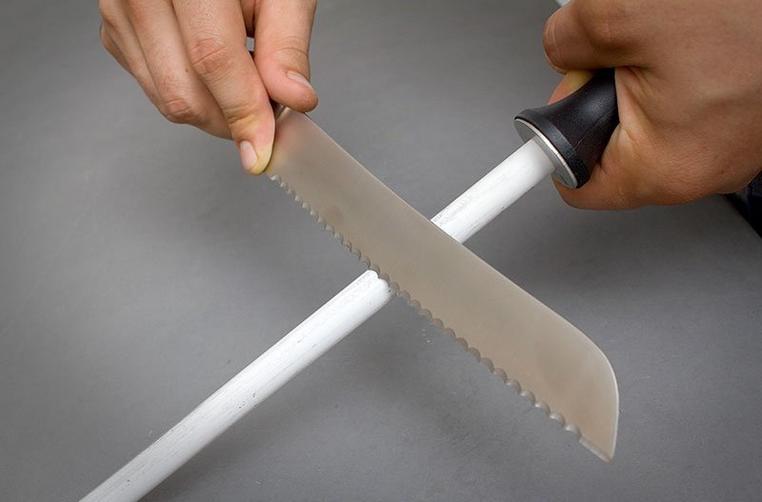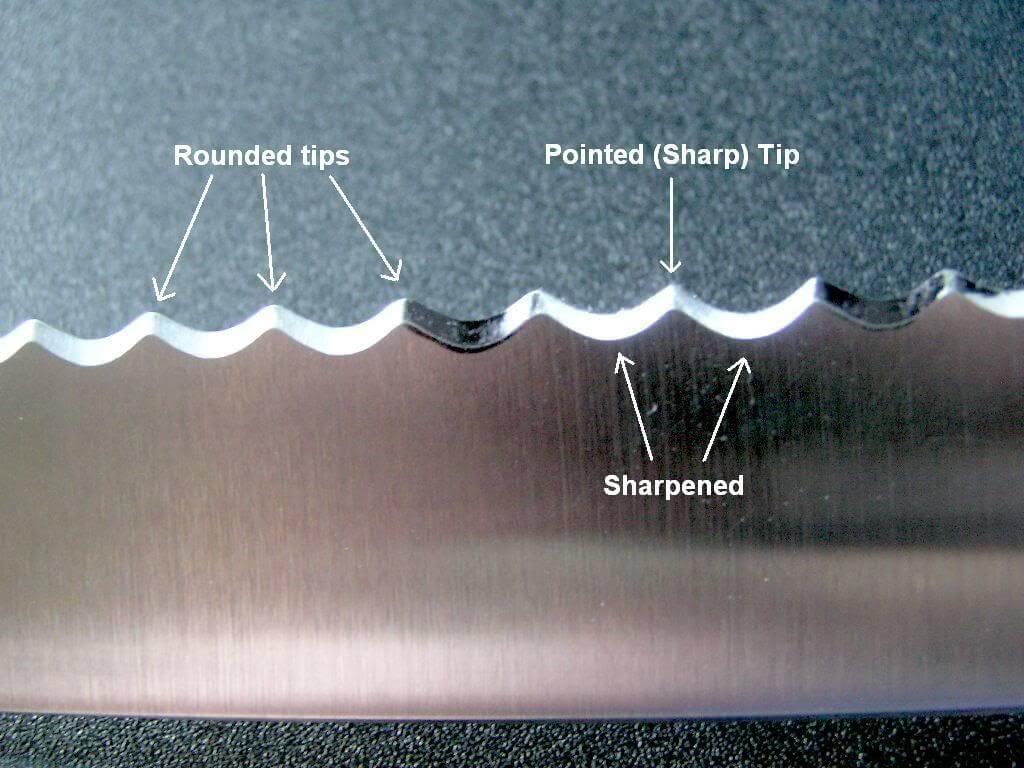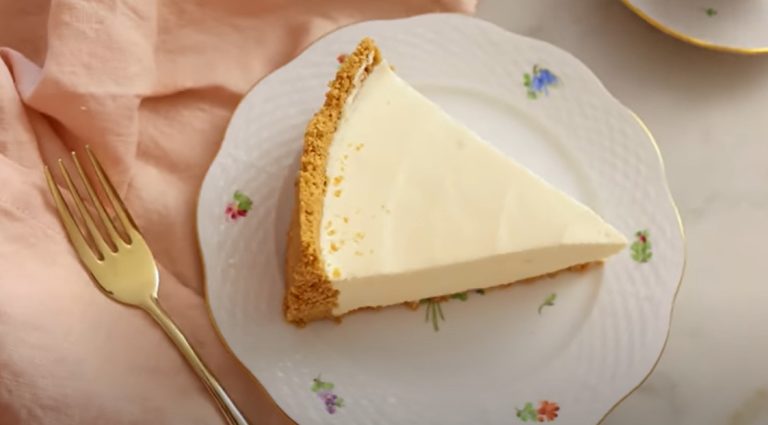Can I Sharpen a Serrated Knife? Expert Tips Revealed
Can I sharpen a serrated knife? Yes, you can sharpen a serrated knife, but it requires a special tool like a ceramic sharpening rod. Sharpen each serration individually by matching the angle of the bevel. Serrated knives need sharpening less often than straight blades because their teeth maintain cutting ability longer.
Many people think that once a serrated knife loses its edge, it’s destined for the back of the drawer. But what if I told you there’s a way to bring it back to life? Imagine slicing through bread, tomatoes, or even a roast with ease, just like the first time you used it.
The good news is, sharpening a serrated knife is not only possible, but also easier than you might think. Keep reading to discover the secrets to reviving your trusty kitchen companion and make meal prep a breeze once more. Your culinary adventures are about to get a whole lot sharper!

Credit: www.knivesandtools.com
Can I Sharpen a Serrated Knife?
Understanding Serrated Knives
Have you ever wondered about the magic behind serrated knives? These kitchen tools might seem mysterious, but they play a crucial role in slicing through tough surfaces with ease. Understanding how serrated knives function can change the way you approach cooking, especially when dealing with crusty bread or ripe tomatoes.
Understanding The Unique Design
Serrated knives differ from your standard kitchen knife. The blade is equipped with saw-like teeth, designed to grip and cut through food without crushing it. This makes them perfect for items with tough exteriors but soft interiors. Think about the last time you cut into a fresh loaf of bread—did the crust remain intact? That’s the serrated knife working its charm.
Why Serrated Knives Are Essential
If you’ve ever used a serrated knife, you know its ability to cut cleanly without much effort. They’re essential for tasks where a smooth blade might struggle. Imagine slicing through a juicy tomato with a regular knife. It might squish and slide, but a serrated knife makes it easy and efficient. These knives offer precision where others might fail.
Common Misconceptions
Some people believe serrated knives cannot be sharpened. This isn’t entirely true. While they require a different technique, sharpening is possible and can extend the life of your knife. Consider the tools in your kitchen. How many have lost their sharpness due to neglect? Understanding proper maintenance can save you money and improve your cooking experience.
Practical Tips
Sharpening a serrated knife involves patience and the right tools. You need a sharpening rod that matches the size of the serrations. Focus on each tooth individually. This method might seem tedious, but it ensures each serration remains effective. Next time you use your serrated knife, notice the difference a sharp blade makes.
Have you tried maintaining your serrated knives before? What challenges did you face? Reflect on your kitchen habits and consider if your tools are performing at their best. Keeping them sharp not only improves your cooking but also makes the process more enjoyable.
Why Sharpening Is Necessary
Serrated knives are kitchen essentials, known for their unique jagged edges. They excel in slicing bread, tomatoes, and soft fruits. Yet, even these sturdy tools need maintenance. Over time, the sharpness fades, making cutting tasks harder. Sharpening is key to restoring their efficiency and extending their lifespan.
Why Serrated Knives Lose Sharpness
Every cut wears the blade a bit. Serrated edges dull slower than straight ones. Still, each use grinds away at the teeth. Regular sharpening keeps them performing well. Ignoring this can lead to frustrating kitchen experiences.
The Impact On Cutting Efficiency
A dull serrated knife struggles with clean cuts. It squashes bread and crushes delicate foods. This affects presentation and texture. Maintaining sharpness ensures each cut is smooth and precise. It saves time and effort in meal prep.
Preserving Knife Longevity
Sharpening also preserves the knife’s life. Regular upkeep prevents excessive wear. It stops deeper damage that may require costly repairs or replacements. A well-maintained knife serves you longer and better.
Enhancing Kitchen Safety
Dull knives slip more easily, posing a safety risk. They require more force, increasing the chance of accidents. Keeping a serrated knife sharp reduces these risks. It ensures safer and more controlled cuts.
Tools For Sharpening Serrated Knives
Serrated knives are essential in every kitchen. They effortlessly cut through bread and tomatoes. But they get dull over time. Sharpening them can be tricky. Specialized tools can make this job easier. Let’s explore these tools.
Diamond Sharpening Rods
Diamond rods are popular for sharpening serrated knives. They fit between the knife’s teeth. Their abrasive surface sharpens each edge. They’re ideal for maintaining a knife’s original shape.
Ceramic Sharpening Rods
Ceramic rods offer a gentle touch. They are less abrasive than diamond rods. This makes them good for regular maintenance. They help keep the knife sharp without wearing it down.
Electric Serrated Knife Sharpeners
Electric sharpeners are quick and easy. They have special slots for serrated blades. They automatically adjust to the knife’s angle. This ensures a consistent sharp edge.
Sharpening Stones
Sharpening stones are versatile. They work for straight and serrated blades. They require careful handling. Using them demands skill and patience.
Professional Knife Sharpening Services
Sometimes, letting an expert handle the job is best. Professionals have the right tools. They restore a knife’s edge effectively. This ensures the blade is sharp and safe to use.

Credit: blademag.com
Step-by-step Sharpening Process
Sharpening a serrated knife is possible with the right technique. Use a sharpening rod or stone designed for serrated edges. Carefully hone each serration to improve cutting performance, ensuring your knife remains efficient for various kitchen tasks.
Sharpening a serrated knife may seem daunting, but with the right steps, you can restore its cutting edge. Unlike regular knives, serrated knives have a unique design that requires a different approach. The process is straightforward if you have patience and the right tools. Here’s how you can sharpen your serrated knife effectively.
1. Gather Your Tools
To begin, you’ll need a serrated knife sharpener or a ceramic honing rod. These tools are designed to fit into the serrations of your knife. A clean, flat surface to work on is also essential. A damp cloth nearby can help in wiping any metal filings from your blade.
2. Identify The Beveled Side
Serrated knives have one side that is beveled, where the grinding has occurred. Hold your knife up to the light to find this side. It’s important to work on this side for effective sharpening. Have you noticed how this side seems slightly different from the other?
3. Insert The Sharpener
Place the pointed end of the sharpener into the first serration. Gently move it back and forth, maintaining the angle of the bevel. This step might require a bit of practice, but you’ll get the hang of it quickly.
4. Sharpen Each Serration
Continue sharpening each individual serration. Spend a few moments on each to ensure a consistent edge. Patience is key here, as each serration needs attention for an even result.
5. Flip And Deburr
Once you’ve sharpened the beveled side, turn the knife over. Use the sharpener to gently remove any burrs from the flat side. A light touch is essential to avoid damaging the edge.
6. Test The Sharpness
After sharpening, test the knife on a piece of paper or a ripe tomato. The knife should glide through effortlessly. If it doesn’t, revisit any dull serrations. Remember the first time you tried a new skill and nailed it? That’s the satisfaction you’ll get from mastering this process. Your serrated knife will feel brand new, ready to tackle any culinary challenge you throw its way. Have you ever thought about how much money you can save by sharpening at home?
Maintaining Knife Sharpness
Sharpening a serrated knife is possible with the right tool. Use a ceramic honing rod to carefully sharpen each serration. This method ensures the knife maintains its unique cutting edge. Regular maintenance is key to keeping your serrated knife sharp.
Maintaining the sharpness of your knives is crucial for efficient kitchen tasks and a safer cooking experience. A sharp knife cuts through food effortlessly, reducing the risk of accidents caused by slipping. You might think sharpening is only necessary for straight-edged knives, but serrated knives need attention too. Serrated knives often appear to stay sharp longer due to their unique design. However, they do dull over time. You might wonder, “Can I sharpen a serrated knife?” The answer is yes, and it’s simpler than you think.
Why Serrated Knives Lose Sharpness
Serrated knives have teeth that grip food, making them great for slicing through tough or crusty surfaces. Yet, every slice creates wear on those teeth. Consider the bread knife you use daily. Each loaf contributes to dulling, affecting performance over time. Regular maintenance can keep your knife slicing smoothly. Don’t let the idea of sharpening intimidate you. You only need a few tools, like a ceramic rod or a specially designed sharpener. These tools fit into the serrations, sharpening each tooth individually. Imagine it as dental care for your knife. Just like flossing ensures each tooth is clean, sharpening each serration ensures overall sharpness.
Steps To Sharpen A Serrated Knife
Sharpening a serrated knife is straightforward. First, identify the side with beveled edges. This is usually the side you sharpen. Gently run your sharpening tool along the beveled side, matching the angle of the serrations. You don’t need to apply much pressure; let the tool do the work.
Frequency Of Sharpening
You might ask, “How often should I sharpen my serrated knife?” There’s no one-size-fits-all answer. It depends on usage. If you cut bread daily, sharpening once every few months might suffice. For less frequent use, once a year is often enough.
Personal Experience: A Sharp Serrated Knife’s Impact
Reflect on your own kitchen experiences. Have you ever struggled to slice a fresh loaf of bread with a dull knife? When I first sharpened my serrated knife, it transformed my cooking. Slicing became effortless, saving time and reducing frustration.
Ensuring Long-term Sharpness
Consider adopting a regular maintenance routine. A simple solution is to schedule sharpening alongside other kitchen tasks. This proactive approach ensures your knives are always ready for use, preserving their longevity and efficiency.
Thoughts On Knife Care
Does your knife deserve more attention? Think about the value it brings to your kitchen. Regular maintenance not only extends its lifespan but enhances your cooking experience. Investing time in sharpening is a small effort for a big payoff.

Credit: www.youtube.com
Frequently Asked Questions
What’s The Best Way To Sharpen A Serrated Knife?
Use a ceramic sharpening rod that matches the serrations’ size. Gently slide it through each serration. Maintain a steady angle to preserve the knife’s edge. Finish by honing the flat side with a gentle touch. Regular maintenance keeps the blade sharp and efficient.
Are Serrated Knives Harder To Sharpen?
Yes, serrated knives are harder to sharpen due to their unique edges. Special tools are needed to maintain their scalloped teeth. Regular sharpening methods for straight-edged knives won’t work effectively on serrated knives. Proper sharpening ensures longevity and performance.
Can You Sharpen A Serrated Knife With A Pull Through Sharpener?
You can sharpen some serrated knives with a pull-through sharpener, but results vary. Select a sharpener designed for serrated edges. Test on an inexpensive knife first to ensure effectiveness. Serrated edges require specialized tools and techniques for optimal sharpening. Always follow manufacturer instructions for best results.
Conclusion
Sharpening a serrated knife is possible with care. Use the right tools. Focus on each serration individually. A ceramic rod works best. Gentle strokes are key. Maintain the knife’s integrity. Sharp serrated knives enhance cutting efficiency. Regular maintenance prolongs their life.
Knowledge empowers better kitchen practices. Don’t fear sharpening. It improves performance and safety. Handle with confidence. Keep your knives ready for any task. Explore various sharpening methods. Find what suits you best. Practice brings skill. Sharpening is an art. Embrace the challenge.
Related Article
- 6 Best Pocket Knife Multi Tool: Ultimate Guide to Top Picks
- Best Cpm S110V Knife: Unmatched Durability and Precision for Every Task
- Best Cordless Electric Knife for Cutting Meat: Top Picks & Reviews
- Best Elk Hunting Knife: Top Picks for Precision and Durability
- Best Electric Knife for Cutting Frozen Meat: Top Picks for Precision
- Best Electric Fillet Knife for Redfish: Top Picks for Perfect Cuts






